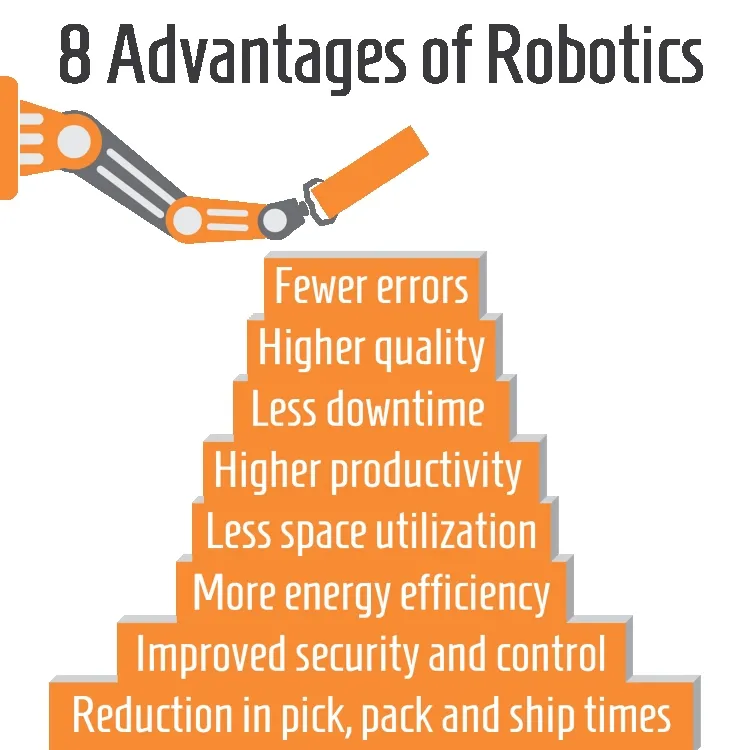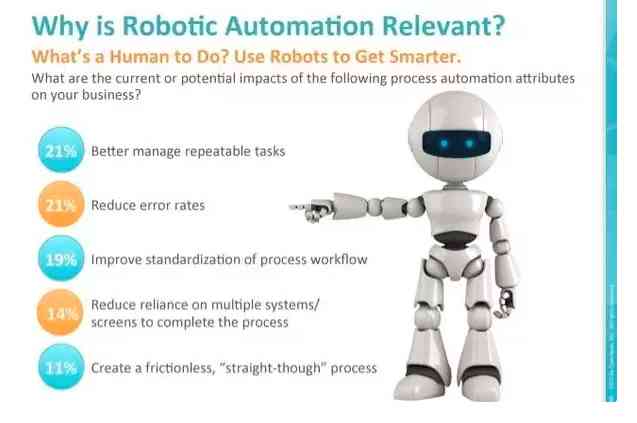Harnessing Robotics: Efficiency and Ethical Concerns...!!!
Robotics offers numerous advantages, including increased efficiency, precision, safety, and cost savings. However, it also presents challenges such as high initial costs, job displacement, technical failures, and ethical concerns. Balancing the benefits and drawbacks of robotics is essential to harness its full potential while addressing its limitations.

Robotics has transformed various industries, from manufacturing to healthcare, through automation and advanced technology. While robots offer numerous benefits, they also come with certain drawbacks.

Pros of Robotics
-
Increased Efficiency: Robots can perform tasks consistently without needing breaks or rest, leading to increased efficiency in production processes. For instance, robotic arms in manufacturing can assemble products precisely and quickly, contributing to a faster and more efficient production line.
-
Precision and Accuracy: Robots execute tasks with high precision, reducing errors and enhancing the quality of manufacturing and assembly processes. Surgical robots assist surgeons in performing delicate procedures with enhanced precision, minimizing the risk of human error.
-
Safety in Hazardous Environments: Robots can be employed in hazardous environments to handle tasks involving exposure to dangerous conditions, ensuring the safety of human workers. Remote-controlled robots are used in bomb disposal units to safely handle and defuse explosive devices.
-
Cost Savings through Automation: Over time, using robots can lead to cost savings through increased productivity, reduced labor costs, and minimized errors in production. Automated systems in warehouses can efficiently manage inventory and fulfill orders, reducing the need for manual labor and associated costs.
-
24/7 Operation: Robots do not get tired and can work continuously without breaks, leading to uninterrupted production and service. This is particularly beneficial in industries requiring round-the-clock operations.
-
Access to Inaccessible Places: Robots can reach places that are difficult or dangerous for humans, such as deep-sea exploration, space missions, and disaster response. This capability expands the scope of human activities and scientific research.
-
Consistency and Reliability: Robots perform tasks with consistent quality and reliability, reducing variability and ensuring uniform output. This consistency is crucial in industries where precision and uniformity are essential.
-
Enhanced Productivity: Robots can handle repetitive and mundane tasks, allowing human workers to focus on more complex and creative aspects of their jobs. This leads to overall increased productivity and job satisfaction for human employees.

Cons of Robotics
-
High Initial Costs: The development, implementation, and maintenance of robotic systems can be expensive. Small and medium-sized enterprises may find it challenging to invest in robotics due to the high upfront costs.
-
Job Displacement: Automation and robotics can lead to job displacement, as robots can perform tasks previously done by humans. This can result in unemployment and economic challenges for affected workers.
-
Technical Failures: Robots are susceptible to technical failures and malfunctions, which can disrupt production processes and require costly repairs. Regular maintenance and updates are necessary to ensure optimal performance.
-
Lack of Human Touch: Robots lack the emotional intelligence and creativity of human workers, which can be crucial in certain industries, such as customer service and creative fields. The absence of human interaction can negatively impact customer satisfaction and experience.
-
Ethical Concerns: The use of robots in warfare and surveillance raises ethical concerns about the potential misuse of technology and the impact on human rights. Ensuring responsible and ethical use of robotics is essential to prevent negative consequences.
-
Dependency on Power: Robots require a continuous power supply to function, making them vulnerable to power outages and energy shortages. This dependency can disrupt operations and lead to downtime.
-
Environmental Impact: The production and disposal of robotic systems can have environmental consequences, including the use of non-renewable resources and electronic waste. Sustainable practices and recycling initiatives are necessary to mitigate these impacts.
-
Complexity of Integration: Integrating robotic systems into existing workflows and infrastructure can be complex and time-consuming. Companies may face challenges in adapting their processes to accommodate robotic technology.
Robotics offers numerous advantages, including increased efficiency, precision, safety, and cost savings. However, it also presents challenges such as high initial costs, job displacement, technical failures, and ethical concerns. Balancing the benefits and drawbacks of robotics is essential to harness its full potential while addressing its limitations.
What's Your Reaction?

















